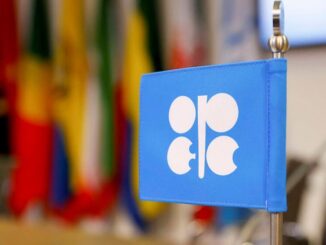
- Net long positions in WTI and Brent jumped by most in three months in the period from July 3 to July 11.
- Even if the recent Saudi moves didn’t result in major price rallies in prompt prices, traders and analysts now see the market tightening this quarter.
- Traders are weighing China’s macroeconomic situation and tightening global crude supply.
Hedge funds and other money managers are back to piling bullish bets on oil, expecting Saudi Arabia’s production cuts this summer to have put a higher floor under prices.
The combined net long – the difference between bullish and bearish bets – in WTI and Brent jumped by the most in three months in the period from July 3 to July 11, the latest commitment of traders reports show. Including fuels, buying in the six most important petroleum futures and options contracts saw one of the biggest increases over the past decade.
Money managers’ positioning is likely to have risen further after the July 11 end of the latest reporting period, considering that lower-than-expected U.S. inflation fueled on July 12 a market rally that saw Brent Crude breaking above $80 per barrel for the first time since May.
Portfolio managers have become more bullish on crude and fuels since Saudi Arabia announced in early July that it would be extending its unilateral 1 million bpd production cut into August.
Even if the recent Saudi moves didn’t result in major price rallies in prompt prices, traders and analysts now see the market tightening this quarter, although recession and demand fears are still very much alive.
The Saudis have not managed to lift oil prices much above $80 per barrel, but they have succeeded in changing the perception of market balances for this quarter and – as Saudi Energy Minister Prince Abdulaziz bin Salman has frequently said – “punish the short sellers.”
The Bulls Are Back
Between July 3 and 11, money managers bought the equivalent of 115 million barrels in the six most important petroleum contracts. That was the 14th largest jump in petroleum futures buying in all weeks since 2013—one of the biggest in the past decade, per estimates by Reuters market analyst John Kemp based on the reports of fund positions in commodities.
Brent and WTI led the buying, but hedge funds managers also bought U.S. gasoline and diesel, as well as European gasoil. Longs were added, and shorts were cut in all petroleum contacts, suggesting that market participants have started to unwind some of the previously bearish bets on the oil complex after Saudi Arabia signaled it would not give up chasing the “stability of the market,” also known as higher oil prices.
With the Kingdom showing it would do whatever it takes to stop prices from collapsing, traders have become more bullish on oil.
Hedge funds and other speculators increased their crude and fuel exposure by one-third to a three-month high with tightening supply in focus in the first seven trading days in July, Ole Hansen, Head of Commodity Strategy at Saxo Bank, said on Monday in comments on the data about the commitment of traders. Crude and fuel products rose by around 7% between July 3 and 11.
Fund buying of Brent and WTI crude oil accelerated. The combination of short covering, with 34,000 lots, and fresh longs, at 47,000 lots, triggered the biggest jump and net long in crude oil contracts in three months. Fuel products also saw strong demand, Hansen said.
The net long in crude oil jumped to the highest since April.
The money managers’ positioning is not outright bullish because the ratio of bullish to bearish bets was 3:1 as of July 11. But the longs-shorts ratio jumped from 2:1 compared to the end of June, pointing to increased confidence from traders that Saudi Arabia has put a firm floor under oil prices.
Macroeconomic Concerns Continue To Weigh On The Market
After the July 11 reporting period of fund positioning ended, oil prices rallied on July 12 and 13 after the U.S. inflation data raised market confidence that the economy could manage a soft landing at the end of the rate-hiking cycle. Oil prices traded on Thursday at their highest level in 11 weeks after data showed U.S. inflation fell to 3% in June, versus expectations of 3.1%. The lowest inflation print in over two years was cheered by markets, although analysts say it would not be enough to dissuade the Fed from hiking interest rates – again – later this month.
But early this week, oil prices slumped on Monday after China reported second-quarter economic growth below expectations. The economic growth miss from China added to the return to production of large Libyan oilfields to weigh on prices.



